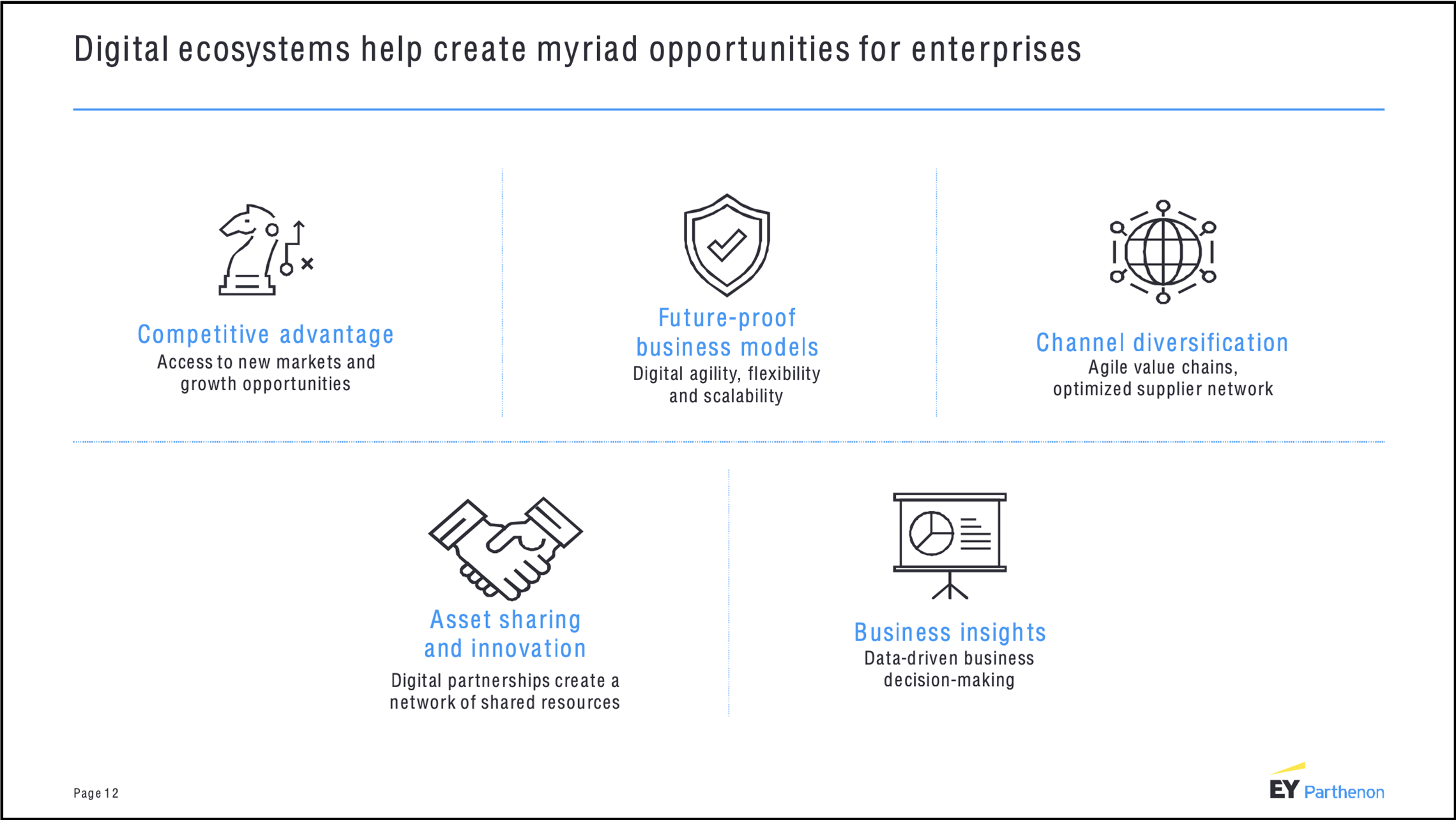Southeast Asia has a strong potential for building successful digital ecosystems, what with organisations and consumers currently embracing digital transformation to tackle the challenges from COVID-19.
According to a recent EY study, Building successful digital ecosystems in Southeast Asia, a digital ecosystem is an interconnected set of offerings that fulfils consumer needs in one integrated experience, comprising businesses across different sectors that collectively offer a broad range of products and services. Participating in digital ecosystems would be advantageous in creating long-term value and competitive advantage.
“Consumer-focused digital ecosystems are forming across Southeast Asia to deliver value at unprecedented speed and scale, in response to industry digital disruptions and accelerated by the pandemic,” said Liew Nam Soon, EY Asean Regional Managing Partner.
The EY study sees Southeast Asia holding a strong advantage over other regions as:
- The region’s average internet penetration is now 63% and is still rising; and
- An increasingly tech-savvy middle-class population is rapidly moving up the socio-economic ladder and paving the way for sharing models across different sectors such as mobility, travel and hospitality, and real estate.

“There is rapid growth of start-ups and digital natives. Some of the leading digital natives in Southeast Asia are transforming into super digital platforms, by delivering interconnected services through an integrated experience – from ride-hailing, food delivery, grocery, logistics, through health, lifestyle and financial services,” said Liew.
“Today’s consumers expect speed, responsiveness and access with a hyper-personalised experience. Digital ecosystems help companies create value through revenue growth, gain new market access, decrease customer acquisition costs, and ultimately strengthen and retain customer relationships.”
Investments are going into Super Apps and nurturing the digital ecosystem
The EY report also found that the rise of super apps, where multiple digital services are brought onto a single platform for an integrated experience, have already drawn investments worth US$ 43 billion between 2016 and 2019. Growing digital ecosystems in SEA has the potential to generate revenue opportunities of US$ 23 billion by 2025, more than five times higher from about US$ 4 billion in 2019.
With the opportunities to beheld in the digital ecosystem, EY believes traditional market players will continue to leverage partnerships and strategic alliance to share resources, data, and capabilities to create digital ecosystems to compete with digital natives.

“Being part of a digital ecosystem allows businesses to leverage the network effect to create a competitive advantage,” said Joongshik Wang, EY-Parthenon Asean Leader. “However, to do so, companies must get their digital transformation strategy and capabilities right. The question is whether they should design or join a digital ecosystem, and there are three strategic choices that businesses can undertake: buy, build or partner.”
Wang added that although established, traditional firms – given their large user base, reach and capital assets – are well-placed to orchestrate a digital ecosystem, they are often outpaced by the emerging digital natives that are ahead in digital adoption.
“Most traditional firms have been focusing on their core business and may be hesitant to build a platform-based business due to legacy systems and corporate culture. They are now turning to collaborate with e-commerce and last-mile platforms to offer digitalised, streamlined and omnichannel experiences to their customers.”









